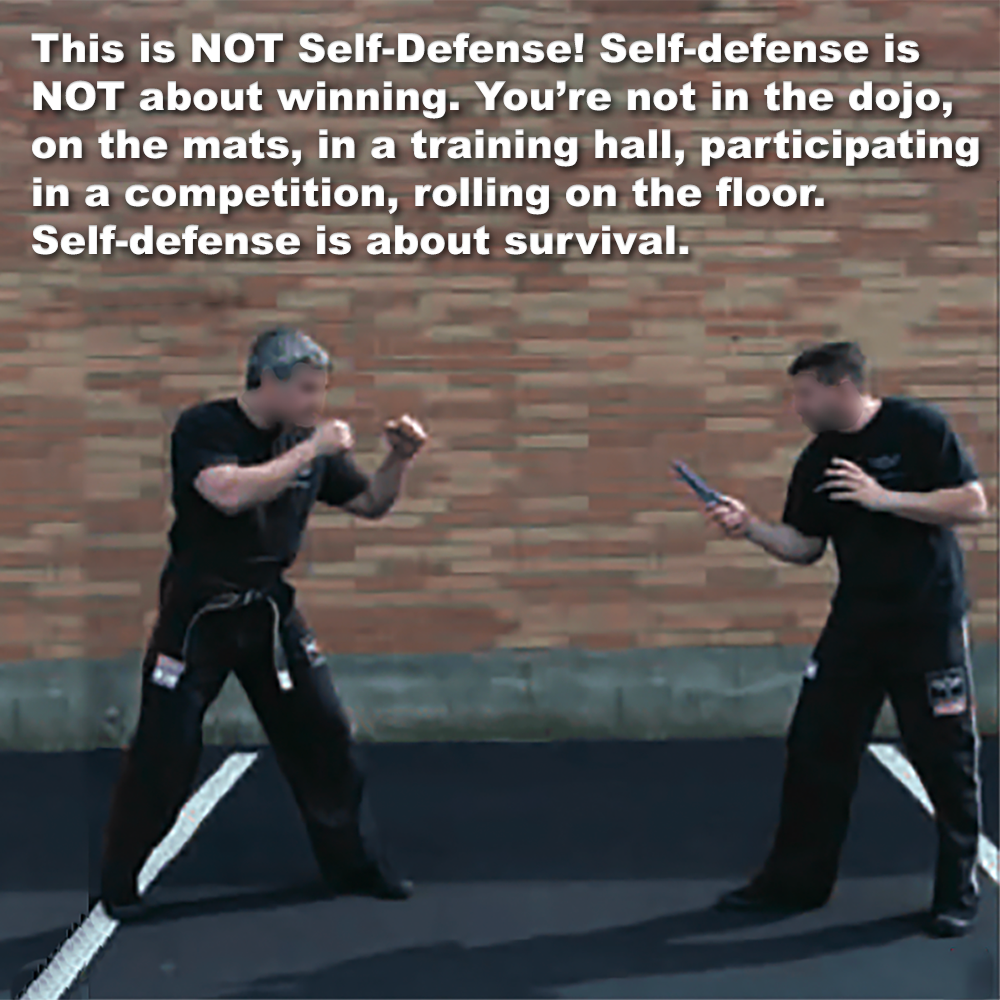
I have been writing articles for several years now and a misconception about self-defense continuously runs through the comments I receive.
.
Let’s attempt to clarify things.
.
Self-defense is NOT about winning. You’re not in the dojo, on the mats, in a training hall, participating in a competition, rolling on the floor.
.
Self-defense is about survival.
.
Pride and dominance have no place here. Engaging in unnecessary fights out of pride can get you hurt, and the root of such a mindset often lies in misguided training.
.
If your dojo only teaches fighting as self-defense, that’s a problem.
.
Survival is at the core of self-protection. It is crucial to recognize that self-protection is not a matter of pride, dominance, or a relentless pursuit of victory. Approaching conflicts with this attitude may lead to unnecessary engagements in fights that could be avoided.
.
If the primary focus of your training revolves around fighting first as a form of self-defense, it signals a fundamental issue with practitioners and instructors being delusional about the true purpose of their training.
.
It’s not uncommon to encounter martial artists, and it doesn’t matter which style you practice, advocating striking as the sole solution for every situation.
.
This is both socially and legally irresponsible.
.
True self-protection focuses on avoiding conflict, not putting your hands up in a high guard and inviting the fight. Fighting skills are a LAST resort, not a first line of defense. You should be investing in proactive strategies first to keep yourself safe.
.
In the realm of real conflicts, consequences are real, and the outcome may involve someone getting seriously hurt or, in the worst-case scenario, losing their life.
.
It boils down to survival – and surviving such encounters introduces medical, legal, and psychological ramifications.
.
The critical factor of success or failure in realistic situations lies in the actions taken at the earliest possible stage. Understanding that self-defense initiates long before physical contact occurs is pivotal.
.
This early stage, often referred to as the pre-confrontation or pre-fight stages, is where effective personal safety training begins.
.
Can you protect a loved one, a partner, your children, while you’re engaging in an unnecessary fight? Can you maintain composure under threatening conditions?
.
The instinctive fight reaction tends to surface when faced with threats, but cultivating composure is an essential aspect of training. It’s not about mindlessly taking an attacker down with a barrage of punches and kicks; rather, it involves consistently practicing how to handle threatening situations until you can remain calm and rational.
.
De-escalation and avoidance tactics become crucial elements of this training.
In the unfortunate event that de-escalation and avoidance prove ineffective, self-defense training shifts towards preserving well-being.
.
While fighting may become necessary, the primary objective should always be to escape and get away safely. Contrary to common misconceptions, you should only using force when force IS justified.
.
Relying solely on striking as self-defense is a superficial approach. If striking is all you know, you really are unprepared for what may come your way.
.
Yes, fighting might be necessary, but your primary goal should always be escape and safety.
.
Think of martial arts, fighting, and self-defense like siblings: same roots, different paths. They’re all related, but their goals and how you get there are totally different.
.
Focusing solely on a single style, even those renowned for tournament success, can create a false sense of security in self-defense. Real-world effectiveness requires a broader skillset and adaptable training.
.
Choose realistic training, not marketing myths. Prevention is the bedrock of effective self-defense, not fighting.
.
.
